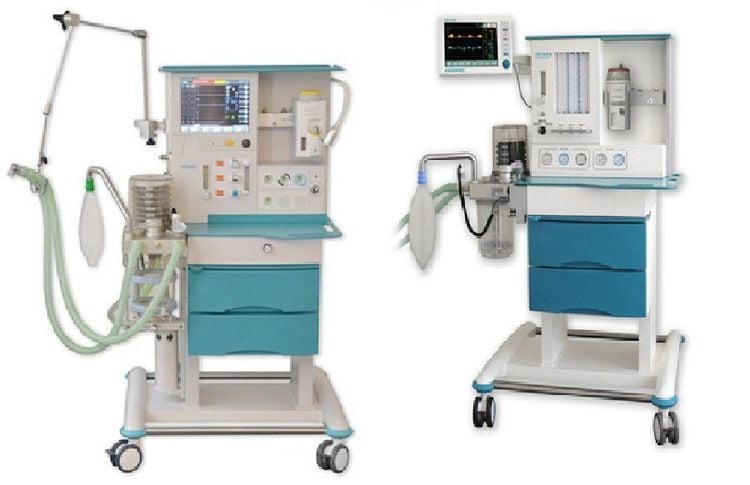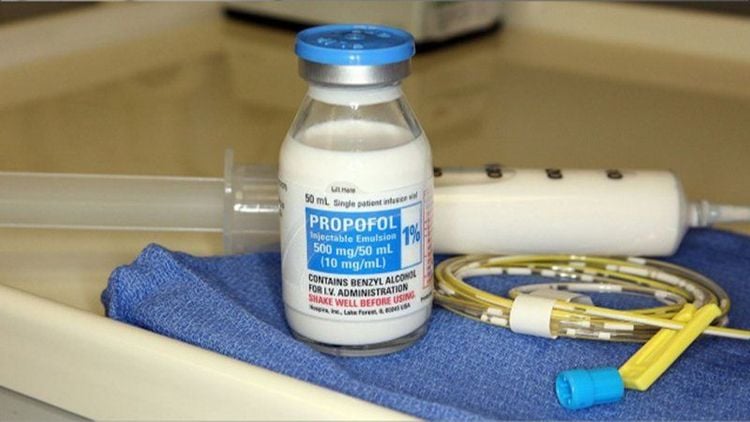This is an automatically translated article.
The article is expertly consulted by Master, Doctor Ton That Quang - Head of Anesthesia - Anesthesia Unit - Department of General Surgery - Vinmec Nha Trang International General Hospital.Endotracheal anesthesia for cesarean section is a general anesthetic technique. This technique is used when the mother refuses, does not cooperate with anesthesia, in emergency situations or when anesthesia fails. In which, general anesthesia for pregnant women should be carried out in case of emergency placenta previa bleeding.
1. Definition of endotracheal anesthesia for cesarean section in patients with bleeding placenta previa
Endotracheal anesthesia for cesarean section on pregnant women with placenta previa bleeding is a technique of general anesthesia with intubation for the purposes of:Control the mother's breathing during surgery Post-operative resuscitation Endotracheal anesthesia, cesarean section surgery on pregnant women with placenta previa bleeding cannot be performed in medical facilities that do not have sufficient anesthetic and resuscitation facilities or technicians who are not proficient in specialized techniques. subject.

Gây mê nội khí quản giúp kiểm soát hô hấp cho mẹ bầu lấy thai khi nhau tiền đạo ra máu
2. Preparing for general anesthesia for pregnant women through endotracheal intubation for cesarean section
Who performs endotracheal anesthesia? Anesthesiologist and nurse specialist in resuscitation Prepare equipment for anesthesia for caesarean section Anesthesia machine system with breathing oxygen source Hand squeeze oxygen source Life function monitoring system (ECG monitoring, arterial blood pressure measurement, etc.) Arterial blood gases SpO2, EtCO2, respiratory rate, body temperature) Defibrillator Suction machine Laryngoscope lamp Endotracheal tube Suction tube Mask Balloon oropharyngeal cannula Pliers Magill, soft mandrin. Local anesthetic Lidocaine 10% spray, Salbutamol spray. Means of prevention in case of difficult intubation: Cook tube, laryngeal mask, flexible bronchoscope, tracheostomy kit, mouth opener...
Trong quá trình gây mê toàn thân cho bà bầu, hệ thống máy gây mê kèm thở rất quan trọng
3. Procedure for performing general anesthesia for pregnant women through endotracheal tube for caesarean section
3.1 General Procedures
Put the mother in the supine position, breathe 100% oxygen 3-6 liters / min, at least 5 minutes before the induction of anesthesia. Install a machine to monitor vital signs such as blood pressure, pulse, SpO2 temperature... Set up the line: 2 intravenous lines on the diaphragm, one of which needs to be able to monitor the mean venous pressure center Give the patient an H2-receptor antagonist and Metoclopramide (an antiemetic). In some cases, pre-anesthesia is required.
Mẹ bầu được hướng dẫn nằm ở tư thế ngửa khi gây mê toàn thân
3.2 Procedures for induction of anesthesia
Sleeping drugs: intravenous anesthetics (propofol, etomidate, thiopental, ketamine...), volatile anesthetics (sevoflurane, isoflurane...) Pain relievers are often used when giving general anesthesia for pregnant women with placenta previa. bleeding requiring cesarean section: fentanyl, sufentanil, morphine... Can be used in combination with muscle relaxants (if necessary): succinylcholine, rocuronium, vecuronium... Conditions for performing endotracheal intubation is: the mother has slept deeply, enough muscle relaxation.3.3 Technical procedure for oral intubation
Open the mother's mouth, place a hand under the neck to help straighten the neck (except for women with cervical spine injury), insert the laryngoscope to the right of the mouth, then move the tongue to the left, push the light deep in and coordinate with the patient. Right hand presses the cricoid cartilage to find the epiglottis and glottis. Initiate rapid induction of anesthesia Perform the Sellick maneuver in case the mother's stomach is full. Continue intubating the endotracheal tube gently through the glottis, stopping when the tube's balloon passes through the vocal cords by 2-3 cm, then gently withdraw the laryngoscope, then inflate the endotracheal balloon. Check the correct position of the endotracheal tube (based on auscultation with both lungs and based on EtCO2 results) Fix the endotracheal tube with adhesive tape. Put the canul in the mouth to prevent the mother from biting the tube (if necessary).3.4 Procedure for maintaining anesthesia
Maintain anesthesia with an intravenous or volatile anesthetic such as sevorane or Isoflurane. Use pain relievers and muscle relaxants if necessary. Control the mother's breathing by machine or hand squeeze. Monitor the depth of anesthesia techniques by monitoring heart rate, blood pressure, sweat, tears, MAC, BIS, Entropy (if any)... Monitor vital signs: heart rate, blood pressure , EtCO2, SpO2, body temperature. It is necessary to prevent the endotracheal tube from being pushed to the wrong position, folded, or blocked.
Thuốc mê tĩnh mạch được sử dụng để duy trì mê
4. When can the endotracheal tube be extubated for pregnant women?
Pregnant women are awake, can follow orders, muscle relaxants are completely neutralized. Raise the patient's head for more than 5 seconds, the TOF index > 0.9 (if any). Postoperatively, the patient had normal breathing, respiratory rate within normal limits, stable pulse and blood pressure, and body temperature above 35 degrees Celsius. There were no complications of anesthesia and surgery.5. Possible complications when performing the procedure
Reflux of gastric juice into the airway (digestive fluid backs up into the mouth and into the airways): then it is necessary to drain the fluid, let the mother lie with her head low and tilted to one side. Hemodynamic disorders: pregnant women with increased blood pressure, cardiac arrhythmias Accidents due to intubation failure, wrong placement of endotracheal tubes into the stomach, complications due to laryngotracheal spasm, Intubation trauma... Respiratory complications: endotracheal intubation causing the tube to be pushed deep into one lung, opening the respiratory system, running out of oxygen... Complications after extubation: respiratory failure, pain hoarse throat, laryngotracheal spasm, upper respiratory tract infection, laryngotracheal stenosis...
Rối loạn huyết động có thể xảy ra khi thực hiện thủ thuật
6. Note when giving general anesthesia to pregnant women with bleeding placenta
Prevention of the risk of serious coagulopathy requiring the use of blood and blood products Precautions for large blood transfusions Prevention of circulatory collapse due to uncompensated blood loss, causing cardiac arrest Prevention of embolism Amniotic fluid causes circulatory collapse and cardiac arrest. Vinmec International General Hospital is a high-quality medical facility in Vietnam with a team of highly qualified medical professionals, well-trained, domestic and foreign, and experienced.A system of modern and advanced medical equipment, possessing many of the best machines in the world, helping to detect many difficult and dangerous diseases in a short time, supporting the diagnosis and treatment of doctors the most effective. The hospital space is designed according to 5-star hotel standards, giving patients comfort, friendliness and peace of mind.
Master. Dr. Ton That Quang has more than 15 years of experience working in the Anesthesia - Resuscitation industry. Doctor Quang was a doctor at the Department of Anesthesiology and Resuscitation at Khanh Hoa General Hospital and a lecturer at the provincial level of Emergency Resuscitation in Obstetrics and Gynecology before being an Anesthesiologist and Resuscitation Doctor at the Department of General Surgery, General Hospital. Vinmec Nha Trang International.
To register for an examination at Vinmec International General Hospital, you can contact the nationwide Vinmec Health System Hotline, or register online HERE.














